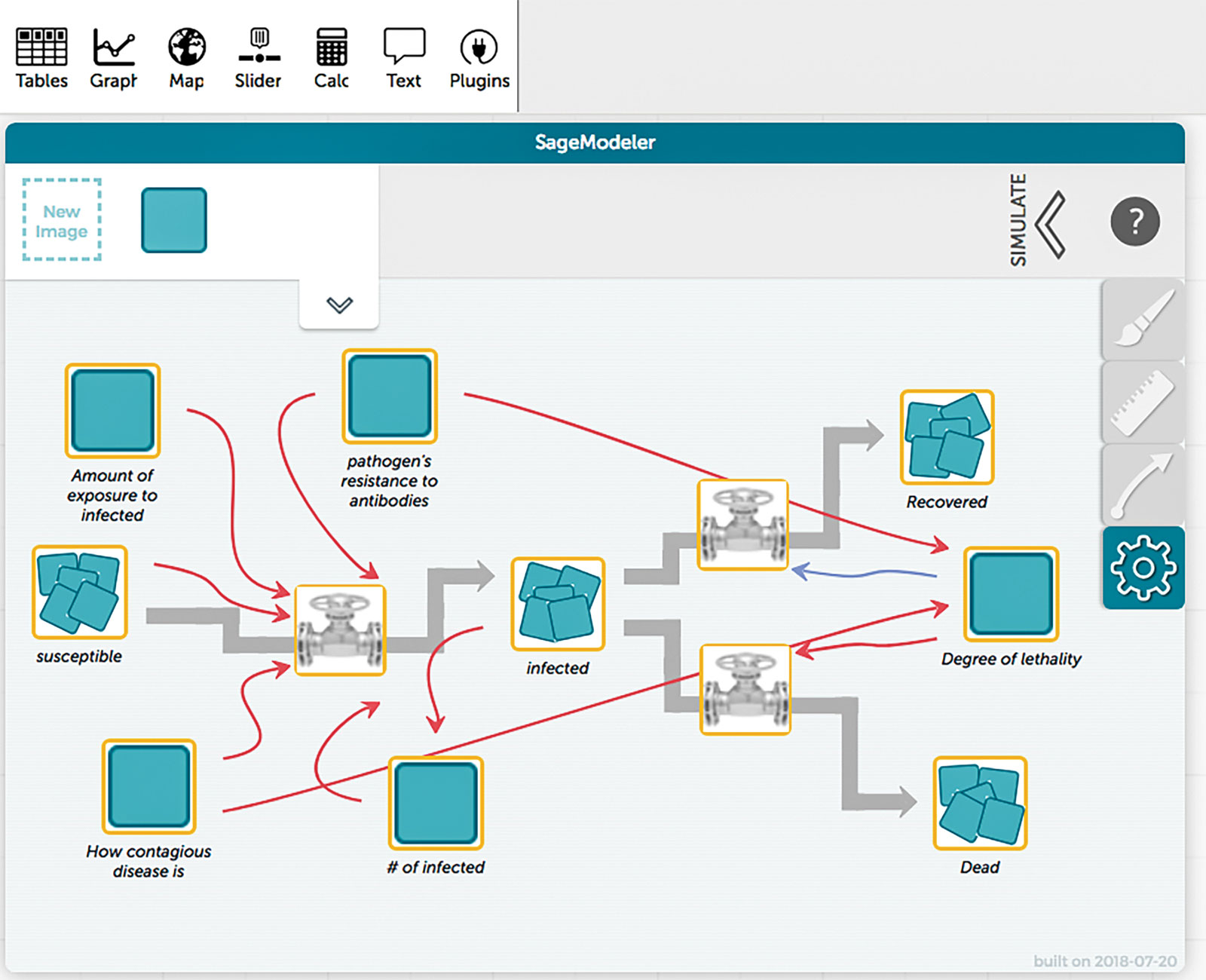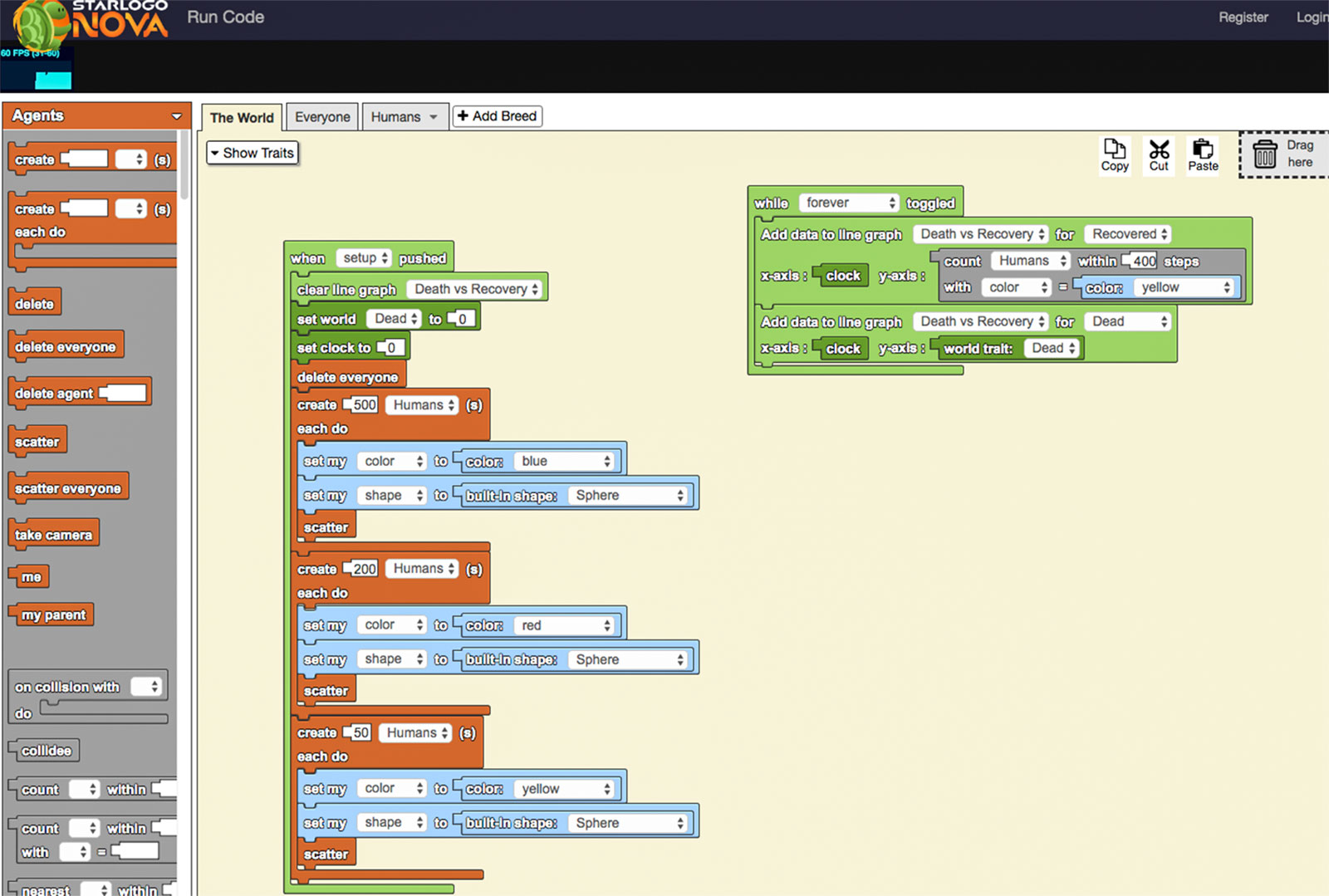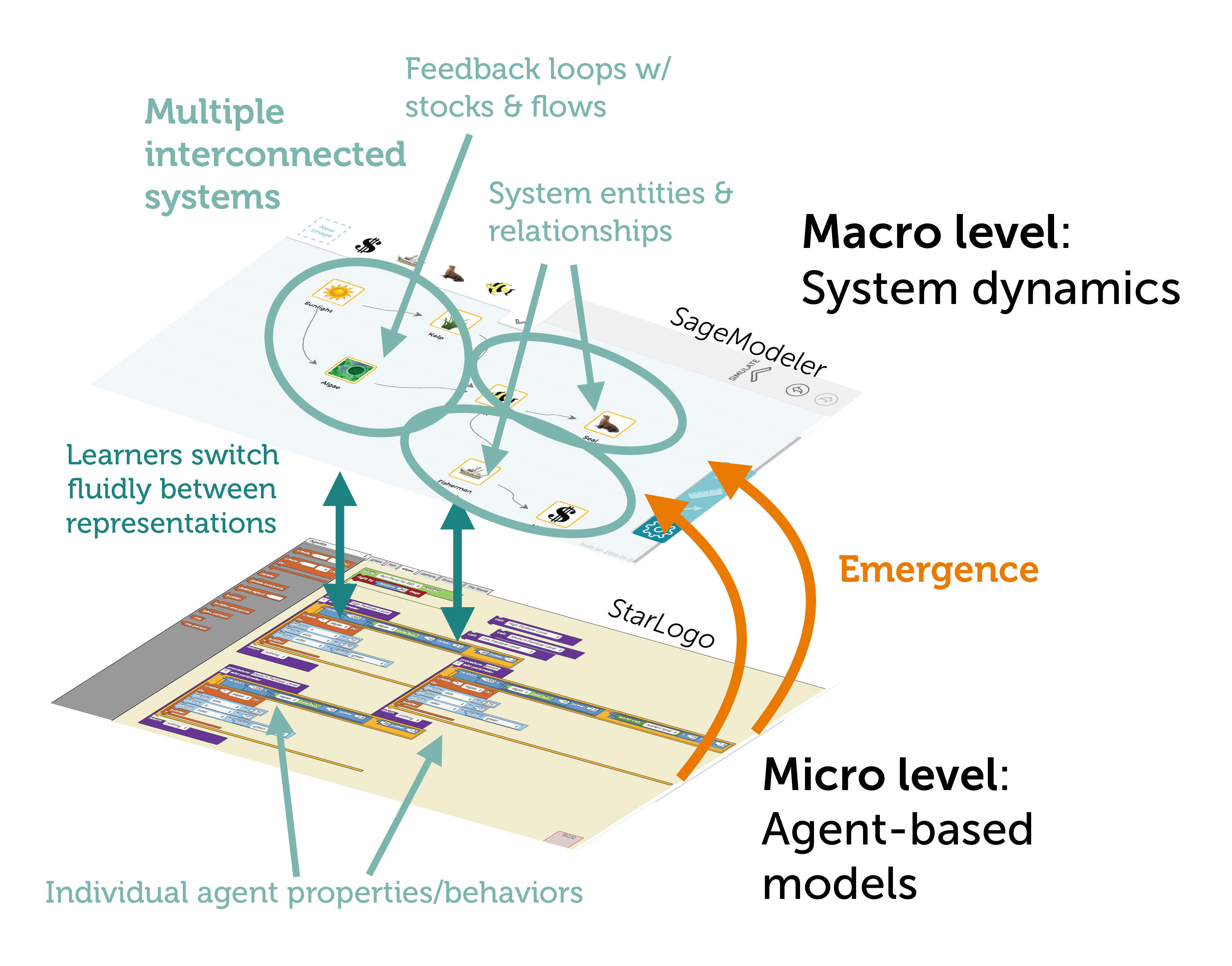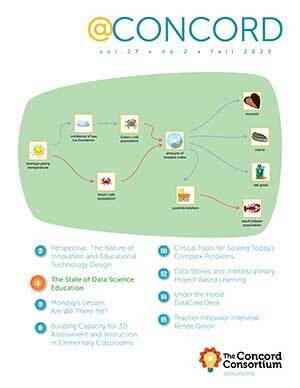Solving Big Problems Requires Understanding Complex Systems
The 21st century is full of complex and perplexing problems that have proven tough to solve: pandemics, market crashes, global warming, poverty, and crime. If these problems could be explained by simple cause-and-effect relationships, we’d have a solution by now.
Understanding complex problems demands a different type of thinking, one that embraces the big picture as well as individual causal factors—a combination of “top down” and “bottom up” thinking—one that sees the world as interacting processes in which small-scale changes give rise to emergent properties on a larger scale. What’s needed is “systems thinking.”
What we observe is not nature itself but nature exposed to our method of inquiry.
~Werner Heisenberg, physicist, 1901-1976
While systems thinking is an essential skill needed by a modern workforce, it largely goes unaddressed in the classroom, in part because it is so difficult to teach. Our three-year Linking Complex Systems project, funded by the National Science Foundation, is beginning to explore whether students can learn about complex systems using computer-based models and simulations that enable students to visualize and manipulate systems and parts of systems in a way not often possible in the real world.
Two modeling approaches
Systems thinking is recognized by the Next Generation Science Standards as an important crosscutting concept across multiple science and engineering disciplines. It recently has become a major focus for developing instructional technologies and curricular activities. Working with MIT’s Scheller Teacher Education Program and the Argonne National Laboratory Systems Science Center as advisors, we are developing curricula around epidemics and evolution that utilize two modeling perspectives—systems dynamics (top down) and agent based (bottom up)—in order to evaluate learning when students use more than one approach to complex systems thinking.
Our project uses two well-established modeling applications to test two approaches. SageModeler, developed by the Concord Consortium, takes a systems dynamics approach, and StarLogo, developed at MIT, is an agent-based application. While systems thinking has been notoriously hard to implement in the classroom, we approached the challenge with two applications we knew were free, web based, and student friendly.
SageModeler looks at the big picture first. Students start by designing and building their own overall systems diagram using pictorial variables. They can then connect related component parts, quantify the relationship between variables, and run input and output analyses of the system, all without the burden of writing equations or programming. And since SageModeler is embedded in CODAP, our web-based data analysis application, students also can view the relationships between variables using tables and graphs.
SageModeler takes a “stocks and flows” approach: stocks or “collectors” (e.g., CO2 in the atmosphere) go up or down in the system over time according to rates of change or flows (e.g., parts per million per year).
StarLogo, on the other hand, is an agent-based model that looks at individual components first. It simulates the interactions of particular agents and how they affect the whole system. StarLogo combines a graphical drag-and-drop programming language with a 3D gaming interface in which students can manipulate variables and their values to determine how the variables behave in the system as they interact over time.



Research in the classroom
Depending on the type of problem, one modeling perspective may be more appropriate than another. But experiencing both perspectives demonstrates to students how there is more than one way to solve a problem, and ultimately helps them develop a more nuanced understanding of systems.
Following a focus group meeting and training, we pilot tested this idea with a group of 11th grade students in a Massachusetts school district. Using an epidemic as the subject, half the students used SageModeler (Figure 1) and the other half used StarLogo (Figure 2) to analyze the epidemic. We then surveyed them about the experience.
When asked to describe what models describe or explain, most students responded that models were for describing, representing, or explaining how something works or looks. While the generally accepted view is that agent-based modeling allows system outcomes to emerge from individual interactions, and thus making the system outcome less predictable, and systems dynamics modeling is better suited to work with real-world data to test system models, student experiences were mixed in this regard.
In general, students understood that complex issues have multiple causes, and based on those multiple causes, the system can be influenced in a number of ways. But they had a harder time understanding the relationships between components. Students also had different comfort levels with each approach— some preferring StarLogo over SageModeler and vice versa. For example, one student stated: “StarLogo is very detail oriented and SageModeler shows you exactly how the epidemic would play out.” But given that this was a pilot study, a definitive evaluation of student responses to the two modeling systems will depend on further study.
Next steps
The purpose of teaching systems thinking is to give students an important problem-solving skill set, and more flexibility when creating and evaluating mental models. If students are exposed to different ways of approaching a problem, they are less likely to fixate on one type of model.
We are planning a new round of research in early 2019 with students in two high school biology classes using a new curriculum developed around genetics and evolution. We hope to unite the two core modeling technologies, SageModeler and StarLogo, and marry the strengths of each to form a new technological genre, called “linked-hybrid modeling,” aimed at supporting learning and reasoning in interconnected complex systems (Figure 3). In addition, we’re developing a set of core learning exemplars for high school students involving complex systems.
For students, as well as educators, to be comfortable with complex systems thinking, these ideas and approaches need to become part of learning across subjects. Our Linking Complex Systems research is one step towards understanding how to give students this critical 21st century skill.
Carolyn Staudt (cstaudt@concord.org) is a senior scientist.
Hee-Sun Lee (hlee@concord.org) is a senior research scientist.
Steven Roderick (steveroderick@mac.com) is an education consultant.
This material is based upon work supported by the National Science Foundation under grant IIS-1629526. Any opinions, findings, and conclusions or recommendations expressed in this material are those of the author(s) and do not necessarily reflect the views of the National Science Foundation.

